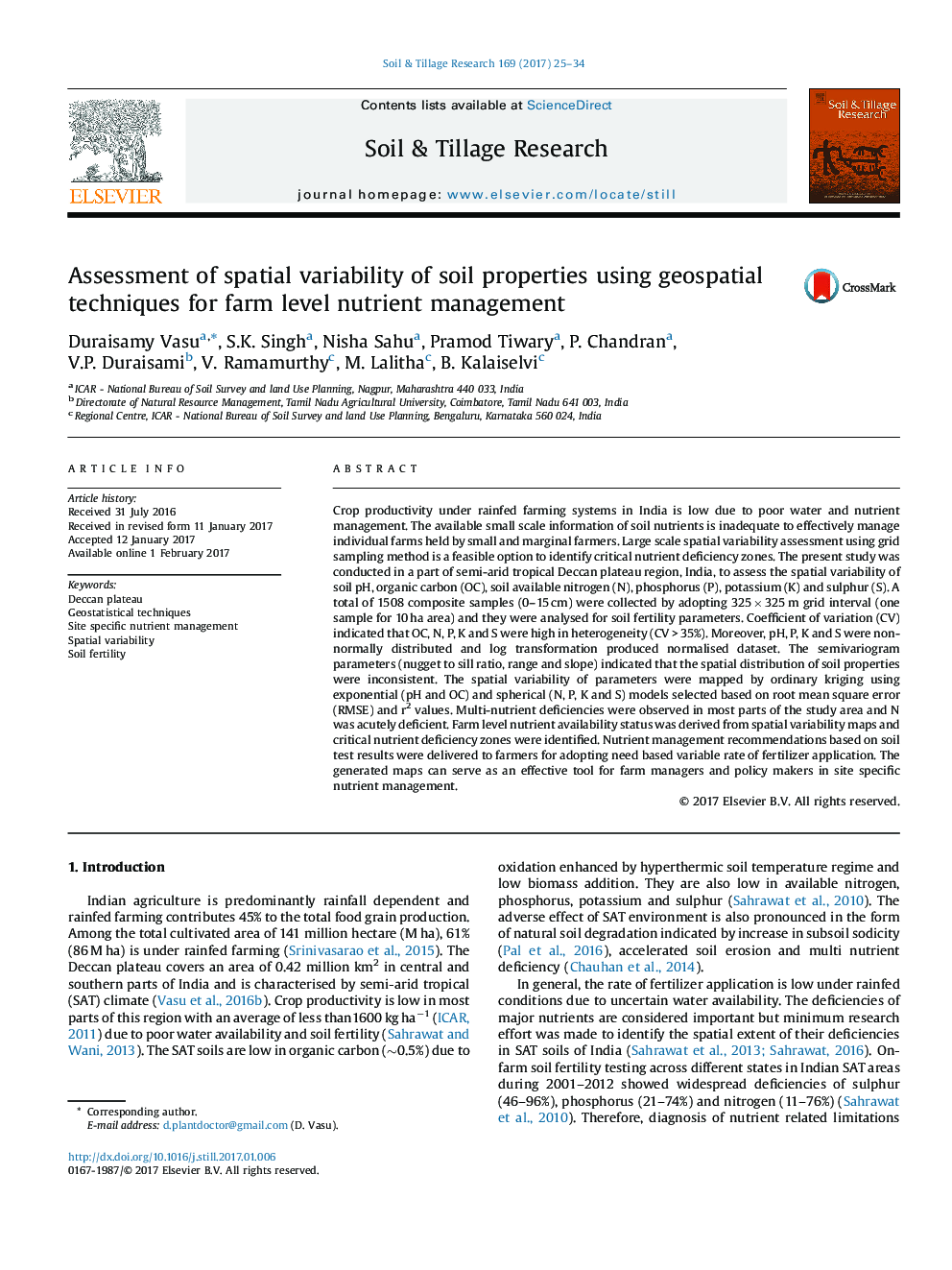| کد مقاله | کد نشریه | سال انتشار | مقاله انگلیسی | نسخه تمام متن |
|---|---|---|---|---|
| 4927571 | 1431834 | 2017 | 10 صفحه PDF | دانلود رایگان |
عنوان انگلیسی مقاله ISI
Assessment of spatial variability of soil properties using geospatial techniques for farm level nutrient management
ترجمه فارسی عنوان
ارزیابی تنوع فضایی خواص خاک با استفاده از تکنیک های جغرافیایی برای مدیریت مواد مغذی سطح مزرعه
دانلود مقاله + سفارش ترجمه
دانلود مقاله ISI انگلیسی
رایگان برای ایرانیان
کلمات کلیدی
فلک دکان، تکنیکهای زمینشناسی، مدیریت مواد مغذی خاص سایت، تنوع فضایی، باروری خاک،
موضوعات مرتبط
مهندسی و علوم پایه
مهندسی انرژی
انرژی های تجدید پذیر، توسعه پایدار و محیط زیست
چکیده انگلیسی
Crop productivity under rainfed farming systems in India is low due to poor water and nutrient management. The available small scale information of soil nutrients is inadequate to effectively manage individual farms held by small and marginal farmers. Large scale spatial variability assessment using grid sampling method is a feasible option to identify critical nutrient deficiency zones. The present study was conducted in a part of semi-arid tropical Deccan plateau region, India, to assess the spatial variability of soil pH, organic carbon (OC), soil available nitrogen (N), phosphorus (P), potassium (K) and sulphur (S). A total of 1508 composite samples (0-15Â cm) were collected by adopting 325Â ÃÂ 325Â m grid interval (one sample for 10Â ha area) and they were analysed for soil fertility parameters. Coefficient of variation (CV) indicated that OC, N, P, K and S were high in heterogeneity (CVÂ >Â 35%). Moreover, pH, P, K and S were non-normally distributed and log transformation produced normalised dataset. The semivariogram parameters (nugget to sill ratio, range and slope) indicated that the spatial distribution of soil properties were inconsistent. The spatial variability of parameters were mapped by ordinary kriging using exponential (pH and OC) and spherical (N, P, K and S) models selected based on root mean square error (RMSE) and r2 values. Multi-nutrient deficiencies were observed in most parts of the study area and N was acutely deficient. Farm level nutrient availability status was derived from spatial variability maps and critical nutrient deficiency zones were identified. Nutrient management recommendations based on soil test results were delivered to farmers for adopting need based variable rate of fertilizer application. The generated maps can serve as an effective tool for farm managers and policy makers in site specific nutrient management.
ناشر
Database: Elsevier - ScienceDirect (ساینس دایرکت)
Journal: Soil and Tillage Research - Volume 169, June 2017, Pages 25-34
Journal: Soil and Tillage Research - Volume 169, June 2017, Pages 25-34
نویسندگان
Duraisamy Vasu, S.K. Singh, Nisha Sahu, Pramod Tiwary, P. Chandran, V.P. Duraisami, V. Ramamurthy, M. Lalitha, B. Kalaiselvi,
